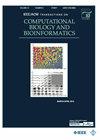在单细胞 RNA-Seq 中同时消除批次效应和标注细胞类型的判别域自适应网络
IF 3.4
3区 生物学
Q2 BIOCHEMICAL RESEARCH METHODS
IEEE/ACM Transactions on Computational Biology and Bioinformatics
Pub Date : 2024-10-29
DOI:10.1109/TCBB.2024.3487574
引用次数: 0
摘要
机器学习技术在分析单细胞 RNA 和识别细胞类型方面的作用日益重要,为细胞发育和疾病机制提供了宝贵的见解。然而,由于不同批次的数据分布存在差异,批次效应的存在给 scRNA-seq 分析带来了重大挑战。虽然已有多种批次效应缓解算法被提出,但大多数算法只关注局部结构嵌入的相关性,忽略了批次校正中的全局分布匹配和判别特征表示。在本文中,我们提出了用于单细胞 RNA-seq 批次效应校正和类型标注的判别域自适应网络(D2AN)。具体来说,我们首先通过对抗性域自适应策略捕获源域和目标域样本的全局低维嵌入。其次,我们开发了一种对比损失(contrastive loss)来初步对齐源域样本。此外,还实现了源域和目标域中类中心点的语义对齐,以进一步进行局部对齐。最后,采用基于域间损失的自步进学习机制,逐步选择与目标域相似度高的样本进行训练,从而提高模型的鲁棒性。实验结果表明,所提出的方法在多个真实数据集上的表现优于几种最先进的方法。本文章由计算机程序翻译,如有差异,请以英文原文为准。
Discriminative Domain Adaption Network for Simultaneously Removing Batch Effects and Annotating Cell Types in Single-Cell RNA-Seq
Machine learning techniques have become increasingly important in analyzing single-cell RNA and identifying cell types, providing valuable insights into cellular development and disease mechanisms. However, the presence of batch effects poses major challenges in scRNA-seq analysis due to data distribution variation across batches. Although several batch effect mitigation algorithms have been proposed, most of them focus only on the correlation of local structure embeddings, ignoring global distribution matching and discriminative feature representation in batch correction. In this paper, we proposed the discriminative domain adaption network (D2AN) for joint batch effects correction and type annotation with single-cell RNA-seq. Specifically, we first captured the global low-dimensional embeddings of samples from the source and target domains by adversarial domain adaption strategy. Second, a contrastive loss is developed to preliminarily align the source domain samples. Moreover, the semantic alignment of class centroids in the source and target domains is achieved for further local alignment. Finally, a self-paced learning mechanism based on inter-domain loss is adopted to gradually select samples with high similarity to the target domain for training, which is used to improve the robustness of the model. Experimental results demonstrated that the proposed method on multiple real datasets outperforms several state-of-the-art methods.
求助全文
通过发布文献求助,成功后即可免费获取论文全文。
去求助
来源期刊
CiteScore
7.50
自引率
6.70%
发文量
479
审稿时长
3 months
期刊介绍:
IEEE/ACM Transactions on Computational Biology and Bioinformatics emphasizes the algorithmic, mathematical, statistical and computational methods that are central in bioinformatics and computational biology; the development and testing of effective computer programs in bioinformatics; the development of biological databases; and important biological results that are obtained from the use of these methods, programs and databases; the emerging field of Systems Biology, where many forms of data are used to create a computer-based model of a complex biological system

 求助内容:
求助内容: 应助结果提醒方式:
应助结果提醒方式:


